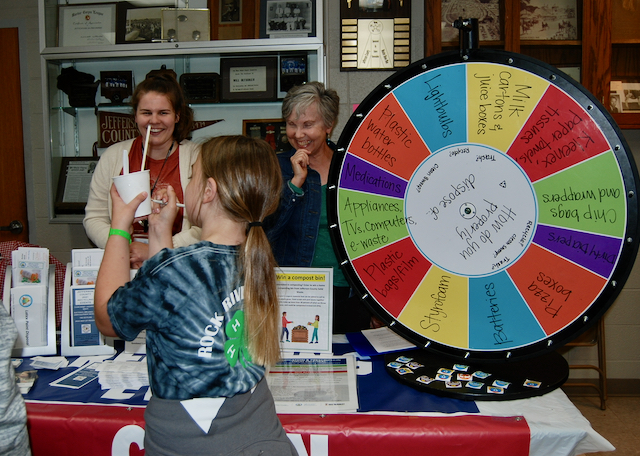By Anita Martin
“The bird, the bird, the bird is the word.” Although those are its lyrics, we’re not talking about the snappy little tune, the popular 1963 song “Surfin’ Bird” by the Trashmen. Not familiar with the song? Check out the YouTube clip from the Aug. 30, 2014, episode of the TV show, “Family Guy” or do the googly thing. It’s pretty much guaranteed to produce a smile.
Right now, the bird being the word of the day is far from a laughing matter or joyous news.
The H5N1 avian influenza virus strain in wild birds, backyard birds, and commercial flocks — mainly, captive chickens, ducks, turkeys, and pheasants — is skyrocketing with the migration and the windy, gusty and mostly seasonally mild temperatures.
Did you know, since mid-November, six bird flu outbreaks have occurred in Wisconsin, affecting more than 300,000 birds in Taylor, Trempealeau, and Barron counties? Such statistics are presented on the State of Wisconsin Agriculture, Trade and Consumer Protection website. A link to the information is here: https://datcp.wi.gov/Pages/Programs_Services/HPAIWisconsin.aspx.
The news has been pretty quiet about all this, which is perplexing to an extent — the politics of poultry disease may well be influencing messaging — and without a doubt, disturbing for a variety of reasons.
Within a recent seven-day period alone, more than 4,236,800 U.S. commercial birds have been impacted in California; Kansas; Michigan, which is less than 140 miles from Jefferson County, and South Dakota.
Additionally, confirmed hunter-harvested mortalities recently include a red-tailed hawk in Michigan and Minnesota; mallards in Illinois, Iowa, and Michigan, and other duck species in Arkansas, Iowa, Michigan and Minnesota, including red-headed, wood duck, gadwall, and American green-winged teal.
Earlier this month, two swans and a duck were confirmed with HPAI in Wisconsin, the closest bird being just 128 miles away, in Brown County. These are bird species known to hang out in Lake Mills and other wildlife areas in Jefferson County.
It’s time to start more concentrated and widespread education. The current Wisconsin hunting sites appear to have little or no information regarding HPAI, or if they do, it’s easy to overlook.
Information can be found on page 26 within a 32-page guide, found here: https://dnr.wisconsin.gov/topic/hunt/regulations.
It appears the last hunter advisory press release from the Wisconsin DNR may have come out in fall 2022. We could be doing better to help maximize public safety. Here’s how New York is alerting their waterfowl hunters of recommended precautions: https://dec.ny.gov/things-to-do/hunting/migratory-game-bird/seasons.
In 2023, in the United States — with more than 75,000,000 birds perishing since February, 2022 — some states are specifically advising hunters to remove their hunting clothing after use and wash their vehicle tires. Recommendations also include to wash tools and work surfaces used for cleaning game birds with soap and water; rinse well and follow by disinfecting with a one-part chlorine bleach to 10 parts water mixture.
To reduce risks of infection, keep bird feeders as far away as possible from poultry and clean feeders regularly with a bleach solution, preferably wearing disposable gloves while cleaning bird feeders.
Our State Veterinarian, Dr. Darlene Konkle, indicated, as of Nov. 16, we have 603 registered locations with poultry here in Jefferson County. This is good news, as registration helps animal health officials communicate with bird owners in the event of nearby disease outbreaks.
More than a month after the first 2023 commercial avian flu outbreak in Wisconsin, DATCP Division of Animal Health disseminated information to all known poultry owners and select others. They alerted bird owners of the six Wisconsin outbreaks and announced a new online mapping tool. The email sent last week read, “In an effort to help producers determine if their poultry are located in an active control area or surveillance zone, DATCP has launched a new map tool. “The surveillance zone is 10 to 20 kilometers from an infected site — within 6.2 miles to 12.4 miles.
The advisory reminded poultry owners to monitor their birds for any changes in behavior and to call 608-224-4872 weekdays to report any birds who’ve died or that look like they may be sick. After 4:30 p.m. or on weekends, call: 1-800-943-0003 and say you’re reporting a potential animal disease.
Let’s all help spread the news, and not the virus.
Anita Martin is a longtime freelance journalist whose work has appeared in such publications as the Waterloo/Marshall Courier, The Madison Times, Agri-View, Dane County Lifestyles (formerly 50 Plus Lifestyles newsmagazine), Verona Press and Wisconsin Woman magazine, covering such topics as health and wellness, and women’s and multicultural issues. More recently, she has developed interest in such topics as environmental issues, avian influenza and other zoonotic diseases, and public health.

Anita Martin, at right, enjoys sharing information about the environment during an exhibit held in a previous year at the Jefferson County Fair. File photo/Kim McDarison.
This post has already been read 1410 times!